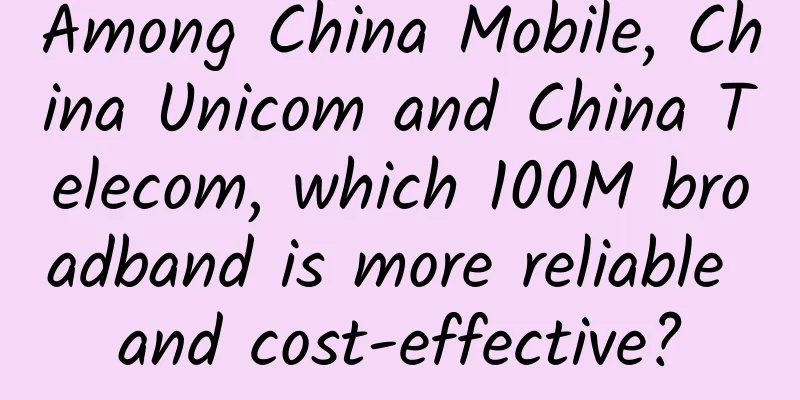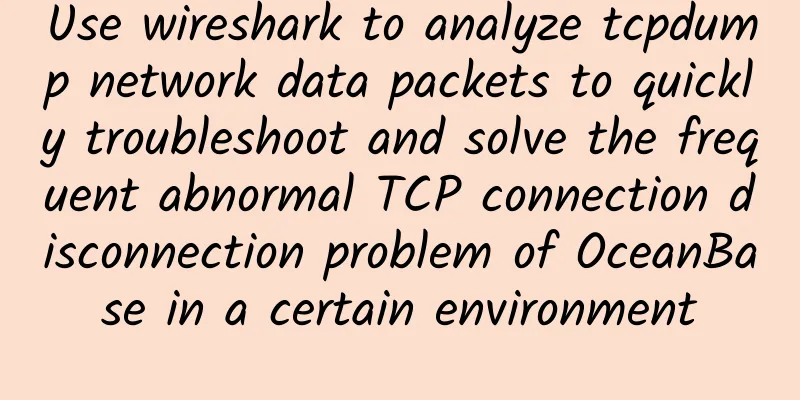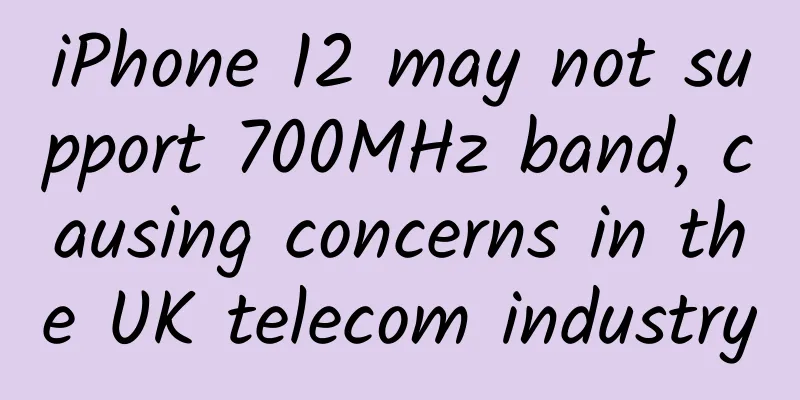Among China Mobile, China Unicom and China Telecom, which 100M broadband is more reliable and cost-effective?

|
Currently, 100M fiber-optic access to homes has become a general trend, and various operators have launched the "speed up and reduce fees" model. So when the 2017 Double Eleven battle is about to begin, which 100M broadband is more cost-effective to choose to cope with the new round of "shopping season"? Let's compare it below. Since my country vigorously launched the "Broadband China" special action in 2015, my country's broadband network has been improved year by year. In the third quarter of 2017, it once again achieved a double breakthrough in fixed-line broadband and mobile broadband. According to the just released "China Broadband Speed Status Report" for the third quarter of 2017, the average download speed of my country's fixed broadband network reached 16.40Mbps in the third quarter of 2017, an increase of 2.29Mbps over the second quarter of 2017, and a quarter-on-quarter increase of 16.2%. The average download speed of my country's mobile broadband users when accessing the Internet using 4G networks has also increased significantly, reaching 15.41Mbps, an increase of 14.5% from the second quarter of 2017.
According to the statistics, with the in-depth implementation of the "speed up and fee reduction" work, the download speeds of both fixed and mobile broadband exceeded 15Mbps in the third quarter of 2017, and also achieved a month-on-month growth rate of more than 10%, and the network speed-up effect was obvious. In addition, the video download speed and the first screen presentation time of web pages have also been improved to varying degrees. So in this environment, if you are still using a broadband network below 10Mbps, you probably don’t have to think about flash sales for now, because you don’t have enough money to spend. So whose 100M broadband is more cost-effective? The answer is revealed below. Comparison of 100M broadband of mainstream operators Let's take Beijing's fixed-line broadband as an example. Among the 100M broadbands launched by a number of mainstream operators, which broadband rate is more cost-effective? Let's compare them together below. China Unicom 100M broadband
The latest charges for Beijing Unicom's 100M broadband: 100M broadband is 1,480 yuan per year, buy 10 and get 4 free, an average of 105.71 yuan per month. Telecom 100M broadband
The latest charges for Beijing Telecom's 100M broadband: 880 yuan per year for 100M broadband, or 73.33 yuan per month on average. Mobile optical broadband 100M
The latest charges for Beijing Mobile's 100M broadband: 1280 yuan per year, or 106.67 yuan per month on average. Broadcasting and Television 100M Broadband (Broadband Pass)
The broadband tariff of Beijing Broadband: 100M broadband costs 980 yuan a year, averaging 81.67 yuan per month. In addition, during the event from October 17 to November 7, if you install or renew any broadband package on the official website and WeChat public account of Beijing Broadband, you can win a prize for a Yunnan travel invitation for two. By comparison, we can see that if you want to install 100M optical fiber, the average monthly broadband rate of China Telecom is 73.33 yuan, which is relatively more cost-effective. You can go to the official website to learn more detailed information. Internet speed regional disparity is still obvious With the continuous advancement of my country's broadband speed-up and price-reduction policies, 100M and even 200M optical broadband networks have entered ordinary households. The proportion of low-speed bandwidth has gradually decreased, and the national average Internet speed has steadily increased, becoming a new trend. However, according to the data on the geographical distribution of Chinese netizens in the first half of 2017, the Internet penetration rate in urban and rural areas continued to increase, but the gap between urban and rural areas is still large. In terms of access, the Internet penetration rate in rural areas has risen to 34.0%, but it is still 35.4 percentage points lower than that in urban areas. In addition, from the perspective of each region, the average available download speed in the eastern region is higher than that in the central and western regions, while the average available download speed in the western region is lower than the national average. Obviously, there is still much room for improvement. If we look at the situation in each province, the average available download speeds in 18 provinces have reached or exceeded the national average; among them, Shanghai and Beijing have a clear lead in speed this quarter, both exceeding 18Mbps. It can be seen that China's broadband, which was previously suspected of "dragging the world's feet", has achieved gratifying results in terms of network speed in the third quarter of 2017 after the continuous deepening of the "Broadband China" special action. However, it is also necessary to see that the regional differences brought about by my country's network distribution are still obvious, and there is still a lot of room for improvement in network quality and experience. The government and many operators need to work together to continue to bring more and better broadband network services to the people. Beware of "fake broadband" How to test your internet speed? Although some progress has been made in "speeding up and reducing fees" for broadband, it is undeniable that the broadband penetration rate between urban and rural areas is still uneven. In addition, many second- and third-tier network operators, often in pursuit of profits, often play word games with consumers, selling the so-called "100M exclusive broadband", while in fact multiple users share one 100M port, resulting in a significant reduction in the actual broadband access experience. The characteristic of this type of "fake broadband" is that when not many people use it during the day, the Internet speed is relatively smooth, but once the Internet usage peaks at night, the actual Internet speed will fluctuate greatly. At this time, everyone needs to open their eyes. As the saying goes, "you get what you pay for." Those broadband packages that seem very cheap may come at the cost of low Internet speed, high latency and other poor experiences. You need to choose with caution. Of course, in order to understand the actual speed of 100M optical broadband and prevent being cheated, you can also test it by yourself. It is recommended to visit the commonly used third-party speed test website - Speedtest to test the broadband speed. At this time, you only need to connect a laptop with a gigabit port directly to a 100M optical broadband modem with an Internet cable, and then use a web browser to access the Speedtest website. It should be noted that the speed test server should be the local operator's server before connecting.
Generally speaking, the speed of 100M broadband measured by the Speedtest website should be around 100Mbps. However, in order to prevent line loss, operators will also increase the bandwidth by about 15%, so the results may exceed 100Mbps. In summary, facing the Double Eleven e-commerce shopping spree, it is recommended that netizens who plan to upgrade their broadband network to 100M fiber optic should choose 100M broadband from mainstream operators, which is more reliable. It is also best to purchase from official channels to avoid being deceived and buying "fake broadband" at a high price. |
<<: 8 trends in infrastructure development in 2018
Recommend
P2P Confession | I don’t produce content, I’m just a route planner for content delivery
When people mention P2P now, they will think of t...
5G speed may be slower than 4G?
In 2020, as the first year of 5G, 5G network cons...
IDC: Strong growth in enterprise WLAN market in the fourth quarter and full year 2021
According to IDC's Global WLAN Market Quarter...
Weibu Online TDP: 99.97% accuracy, how low can the false negative rate be under high-intensity confrontation?
On March 6, 2022, the "Attack and Defense Co...
DAMO's full-stack data solution is grandly launched, opening a new journey for domestic databases
The Fifth Plenary Session of the 19th CPC Central...
How does user-mode Tcpdump capture kernel network packets?
[[422515]] This article is reprinted from the WeC...
Demystifying the elastic data center
When it comes to data centers, the term "res...
SD-WAN: 10 essential considerations organizations need to weigh
SD-WAN is one of the hottest new network technolo...
Hypere: £12/quarter KVM-AMD Ryzen9/2GB/70G NVMe/10Gbps unlimited traffic/UK data center
Hypere should be a relatively new foreign hosting...
Transmission technology has made a great leap forward! The IoT market will exceed one trillion this year
Multiple IoT transmission technologies have been ...
Allied Market Research: Global Small 5G Network Market Size to Reach $8.32 Billion in 2027
On November 5, a report recently released by mark...
China's digital economy reaches a turning point from big to strong
[[396176]] On April 25, the Cyberspace Administra...
Foreign media: Global investment and deployment in 5G will accelerate in 2020
Foreign media reported that in 2020, global inves...
RAKsmart recharge big gift: popular VPS host $0.99/month, flash sale server $30.62/month
RAKsmart has launched a promotional event for the...
Why does TCP use the "three-way handshake" to establish a connection? An example will teach you
First of all, why is it a three-way handshake? Af...









